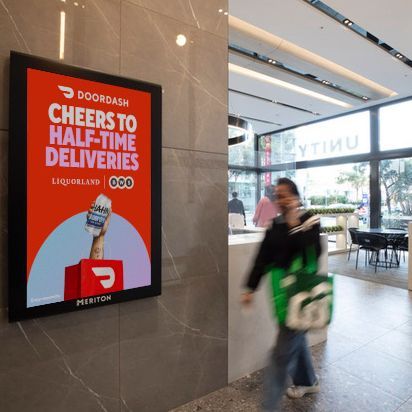

Image by DALL·E Pic: Midjourney
Editors' Note: Many Fast News images are stylised illustrations generated by Dall-E. Photorealism is not intended. View as early and evolving AI art!

2XU's bold new path,
With Pattern, they find their stride,
In DTC's aftermath.

2XU's strategic pivot to DTC model spurs growth
Australian athletic wear brand 2XU has recently overhauled its international sales strategy, moving from a multi-channel distribution model to a direct-to-consumer model in order to regain control over its brand and product positioning.
Working with global ecommerce and marketplace accelerator Pattern, the brand's distribution overhaul generated a 25% increase in 2XU's average selling price and an 80% full-price sales rate. Overall, 2XU's growth over the past two years across Amazon and ecommerce has exceeded 25%.
It cam after 2XU identified that its complex distribution model and practice of listing a wide range of outdated products on Amazon had weakened its premium image.
CEO at 2XU, Marc Boelen, said: "The international sportswear market is very crowded and highly competitive. As a premium technical brand, we needed to take control and differentiate ourselves. This meant simplifying our distribution to focus on our unique selling point (USP) as a technical compression and triathlon brand, which 2XU is well known for and consumers are willing to pay a premium for. Our data further supported this, showing that content from 2XU's athletes and ambassadors focused on the technical benefits of our range outperformed other products and content in the US."
"The international sportswear market is very crowded and highly competitive. As a premium technical brand, we needed to take control and differentiate ourselves. This meant simplifying our distribution to focus on our unique selling point (USP) as a technical compression and triathlon brand, which 2XU is well known for and consumers are willing to pay a premium for. Our data further supported this, showing that content from 2XU's athletes and ambassadors focused on the technical benefits of our range outperformed other products and content in the US," said Marc Boelen, CEO at 2XU.
Previously, 2XU's distribution model into markets like North America included multiple channels, creating inconsistencies in pricing and brand perception. The strategy of uploading a wide range of end-of-life products exclusively to Amazon was intended to reduce channel conflicts and maintain stock keeping unit (SKU) continuity. However, this strategy negatively impacted 2XU’s brand perception
"Moving from a multi-channel distribution model to a direct-to-consumer (DTC) model is a major strategic change. As a brand, we saw a critical need to build out our international DTC business, even if it meant accepting a short-term impact on sales, to achieve long-term control over pricing and positioning," said VP of Digital, 2XU, Lindsay Swaik.
Pattern guided the brand's transition from a 1P to a 3P account on Amazon, giving the brand more control over its product listings and customer perception. Pattern also assists with 2XU's DTC operations across the Australian and UK markets.
"2XU had to transform its strategy to target a new customer base willing to pay full price for high-quality technical products. This shift was essential to drive profitable growth and achieve the brand’s business goals in international markets like the US," said Managing Director of Pattern Australia, Merline McGregor.
Pattern has helped 2XU transition from a 1P to a 3P account on Amazon, giving the brand more control over its product listings and customer perception. Pattern also assists with 2XU's DTC operations across the Australian and UK markets.
"Moving to a premium pricing model required a leap of faith, but it has paid off. We now operate as a premium, full-price brand with healthy margins and the ability to reinvest in acquiring new customers. Our growth over the past two years across Amazon and ecommerce has exceeded 25%, and we continue to see strong performance on both fronts," said Boelen.
Partner Content from Salesforce
The AI Imperative: It’s Time for Financial Services to Embrace AI
How Trusted AI Opens Up New Possibilities for Customer Service










